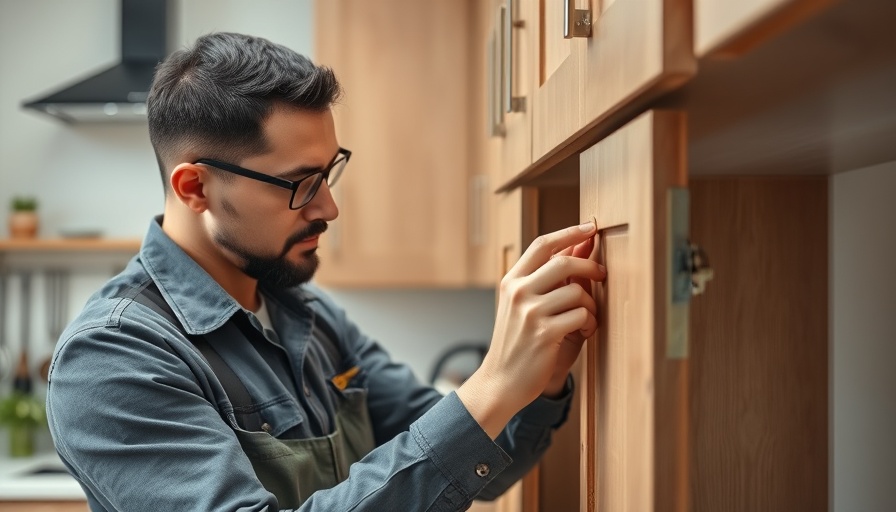
Unlocking the Power of Euro Hinges: A DIY Revolution
Euro hinges, often referred to as cup or concealed hinges, might appear intimidating at first, but they revolutionize cabinet installations with their simplicity and efficiency. In comparison to traditional hinges, which can be tricky and demanding in terms of precision, Euro hinges offer a nearly foolproof installation process, making them ideal for both professional installers and DIY enthusiasts.
Understanding the Basics of Euro Hinges
Euro hinges are particularly advantageous due to their user-friendly installation method. Just one accurately bored hole is required to secure these hinges, significantly reducing the margin for error. Unlike traditional hinges that can lead to frustrating adjustments, Euro hinges allow for easy alterations in the door's alignment with a simple turn of the screws. This feature saves valuable time and effort during installations.
The Ease of Adjustments with Euro Hinges
One of the standout benefits of Euro hinges is the effortless adjustability. Traditional hinges often necessitate hours of planning, sanding, and various tricks to fine-tune the alignment. However, Euro hinges enable quick fixes, allowing you to modify the fit in all directions just by turning a screw. It's this kind of convenience that makes them a go-to choice in modern cabinetry.
Swift Door Removal and Installation
Another significant perk is how easily doors can be detached. Euro hinges are equipped with a snap-on mechanism, allowing users to quickly check the fit or entirely remove the door with a simple pull on the release lever. This is a stark contrast to traditional hinges, where removing a door often requires unscrewing multiple components. This feature becomes especially handy during painting or refinishing jobs.
Choosing the Right Euro Hinge for Your Cabinet
When selecting the correct Euro hinge style for your project, consider these four key factors:
- Cabinet Type: Determine whether your cabinet is a face frame or a frameless system. Face frame cabinets have a surrounding structure that influences hinge attachment points, while frameless cabinets are designed as a box without a front framework.
- Door Type: Are your doors inset with the cabinet face or overlay, covering part or all of the cabinet face? Understanding your door style will influence your choice of hinge.
- Overlay Amount: If you choose overlay doors, you’ll need to decide how much of the cabinet face they should cover. The mount plate thickness will affect this aspect as well.
- Maximum Opening Degree: Assess how far you want your doors to open; select hinges that suit your accessibility needs.
Steps for Installing Euro Hinges
To install Euro hinges effectively:
- Start by fixing the hinges on the door—this will require drilling two sets of holes: the "cup hole" that receives the hinge itself (typically 1-3/8 inch in diameter) and two smaller pilot holes for screws. A Forstner bit for the cup hole is vital.
- Some Euro hinges come with templates for accuracy, while others may require following a scale drawing included in the instructions, typically measured in millimeters.
- Finally, secure the hinges to both the door and the mounting plates carefully, adjusting as necessary to ensure a perfect fit.
Enhancing Your DIY Skills with Euro Hinges
For DIYers, understanding and using Euro hinges is a fundamental skill. Not only do they simplify cabinet installations, but they also elevate the overall aesthetics and functionality of your home projects. Mastering this skill can greatly enhance your capability in home maintenance and repairs, expanding your toolbox of handyman tips.
In conclusion, Euro hinges present an approachable yet effective means for enhancing your home improvement efforts. Whether you're refreshing your kitchen or adjusting cabinet doors, these hinges are a worthy addition to your DIY toolkit. Remember, practicality in home maintenance is what leads to lasting improvements. Now is the time to elevate your projects with the efficiency of Euro hinges!
 Add Row
Add Row  Add
Add 



 Add Row
Add Row  Add
Add 


Write A Comment